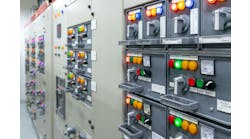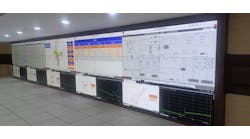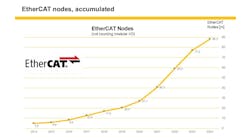“The challenge was to push the plant to operational limits, adjusting to shifting constraints automatically and maximizing product throughput, while maintaining product integrity.” Beam Suntory’s Kevin Ludwig on production-enhancing upgrades at the company Jim Beam distillery.
When a brash, young engineer walks into a decades-old distillery, he or she might be perceived as a threat to the traditions and craftsmanship essential to maintaining the legendary qualities of the namesake bourbon.So, it could have been at the Jim Beam distillery in Clermont, Kentucky, when, “in 2015, we set out to answer the question of how to get a few more gallons per minute out of a still,” said Kevin Ludwig, senior electrical engineer, Beam Suntory. “I was at an Endress+Hauser distillers’ event, saw a presentation, and aha!”
Ludwig co-presented with Kent Stephenson, principal engineer, Rockwell Automation, at the Rockwell Automation Process Solutions User Group (PSUG) event in Philadelphia.
Jim Beam is on its eighth generation of master distillers, producing 90 million bottles a year between its Clermont and Boston distilleries. “Any changes we made needed to respect and maintain the process; modernizing a facility does not change the legend,” Ludwig said.
“We had many processes in manual,” Ludwig said. “How can we optimize it without changing the product? We told them we’d automate it to run the way you expect it to run.”
Instead of doing loop control, reading temperatures and setting setpoints, operators would be freed to monitor the process from grain to still, take samples and record information, “not controlling the system when they shouldn’t have to,” Ludwig said. “We’d make as much Jim Beam as we can, exactly as it should be, without any compromise of quality or taste, so the challenge was to push the plant to operational limits, adjusting to shifting constraints automatically and maximizing product throughput, while maintaining product integrity.
Model predictive control as an answer
Based on that Endress+Hauser presentation, Jim Beam checked out model predictive control (MPC). “We see Pavilion8 MPC as a modern control strategy for a legendary product, to allow our operators to focus on high-value tasks, to optimize without compromising any of our process or quality,” Ludwig said.
The Pavilion8 console delivers key performance indicators with baseline indications, controller performance statistics such as percent utilization (percent of time manipulated variables are enabled), error from desired value and percent of time at constraints. “It’s all the operators need to know,” Ludwig said. Management views allow users to enable or disable specific manipulated variables and to set targets and limits.
In practice at the distillery, MPC on low wine proof allowed the plant to move the process closer to optimum setpoints while reducing standard deviations. “Operations had been boiling too much water, wasting energy and using still capacity to process water instead of alcohol,” Ludwig said.
On high wine proof, results were a little less impressive. “Operations paid a lot of attention to this parameter, so MPC didn’t move the target much, but it reduced standard deviation,” Ludwig added.
Along with spending a lot of time on manual control, operators tended to set the process up to run safely and smoothly, not to maximize production, Ludwig said. “Better to leave some room for capacity than to have the plant shut down,” he said.
“Now, they get the still up and running, load the recipe, and MPC optimizes the steady state,” said Ludwig. “Then, when it’s time to clean, they shut it down as they’ve always done.”
MPC manages distillation constraints, distillation targets, distillation material balance and key process constraints. But it prioritizes quality, Ludwig said. “If there’s not enough steam available, it will hold the beer feed down to maintain quality.”
At Jim Beam, the ability of MPC to increase distillation throughput has been stymied by limits in beer brewing and dry house capacity, so instead of more gallons of alcohol per minute, cost savings are coming from decreased steam usage, maximized beer still feed and preventing alcohol loss.
“It frees the operators to focus on high-value tasks, not holding a tank at a level,” said Kent Stephenson, principal engineer, Rockwell Automation. “Now, the distillery’s very experienced operators can spend time looking at how well the plant is running, not twiddling things around.”
The editors of Control are on-site at Automation Fair 2018 to bring you breaking news, innovations and insights from the event. Once the event is over, they will put together a report featuring the top news. Pre-order your copy today.
[javascriptSnippet]






